When it comes to enhancing your website’s authority and climbing the ranks in search engine results, understanding your competitors’ strategies can be a game-changer. Analyzing your competitors’ backlinks is a powerful tactic for this because it uncovers valuable insights that can supercharge your off-page SEO efforts.
Competitor backlink analysis is a multi-stage process. That’s why we’ll begin this post by honing in on the initial step—how to find the backlinks of competitors—to improve your own backlink strategy.
Now, let’s take a deep dive into this process together!
Should you search for competitor backlinks?
In a word, yes. Exploring competitor backlinks can provide you with a wealth of information about their successes and shortcomings.
Think of it as peering behind the SEO curtain and observing the inner workings of their optimization efforts. You can pinpoint which authoritative websites are vouching for them and then use that info to find gaps in your own backlink portfolio.
So, if you’re looking to build more backlinks to your website, investigating how your competitors built and earned their backlinks stands as an excellent starting point. The underlying notion is that if a website is linking to your competition, there is a good chance they’ll extend the favor back to your site. This helps you refine your approach and align your efforts with tried-and-true practices that are yielding results for others in your niche.
How to find competitor backlinks
Before discovering your competitors’ backlinks, you’ll need to identify who your competitors are. To learn the methods for finding all your SERP rivals, refer to our comprehensive guide.
Once you’ve successfully identified five key competitor websites, you’re ready to investigate their backlink profiles. An invaluable tool for this task is SE Ranking’s Backlink Finder. This feature-rich tool offers a wide range of modes for different levels of research. Some examples of these modes include a general competitor overview, a category analysis, or a page examination. This versatility allows for a more focused and refined backlink search.
Let’s thoroughly examine this method by breaking down each step.
- Enter the domain name of your competitor to generate a comprehensive backlink report.
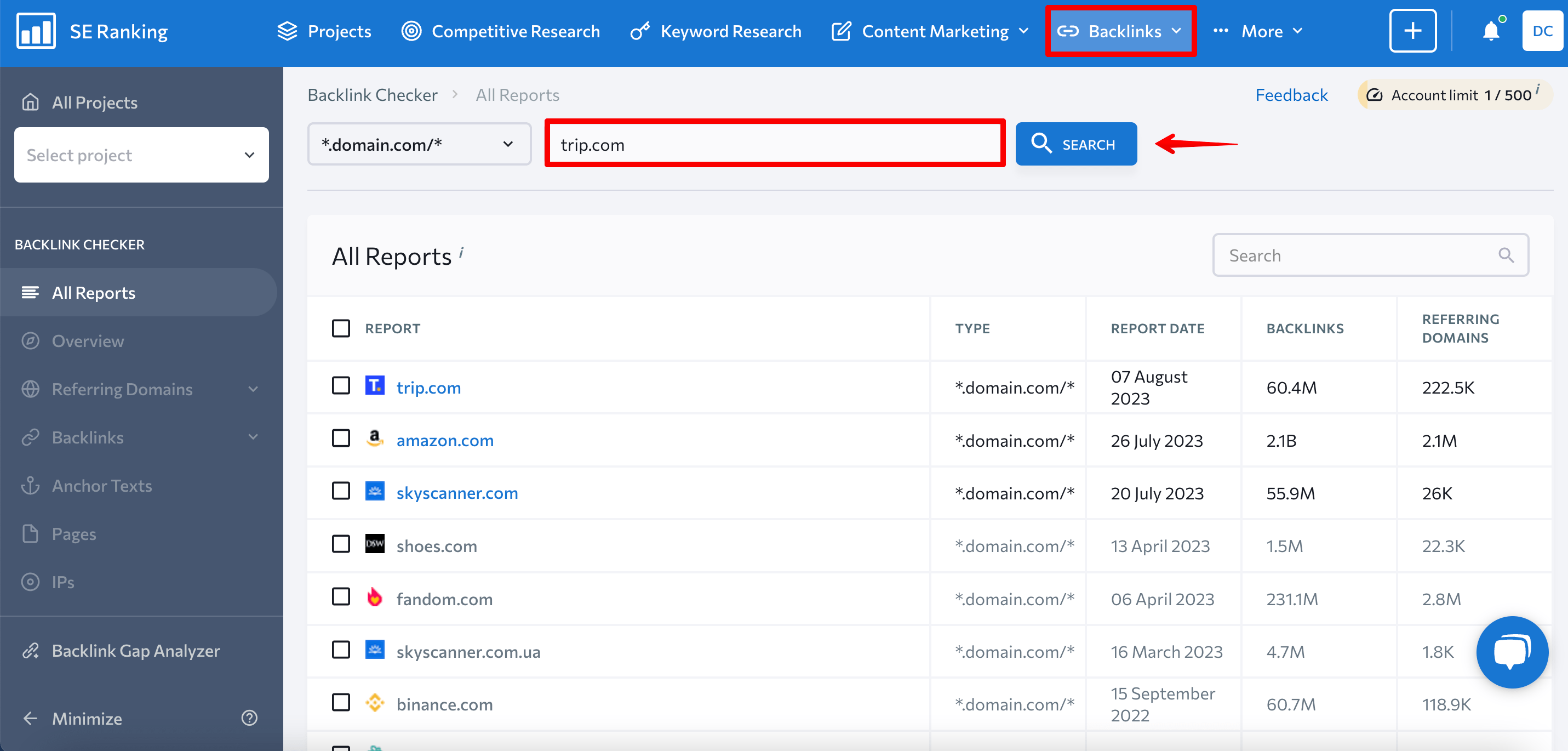
The tool will present you with a summary of the competitor’s backlink profile, including metrics like Domain Trust score, the count of referring domains, backlinks, anchors, and backlink toxicity.
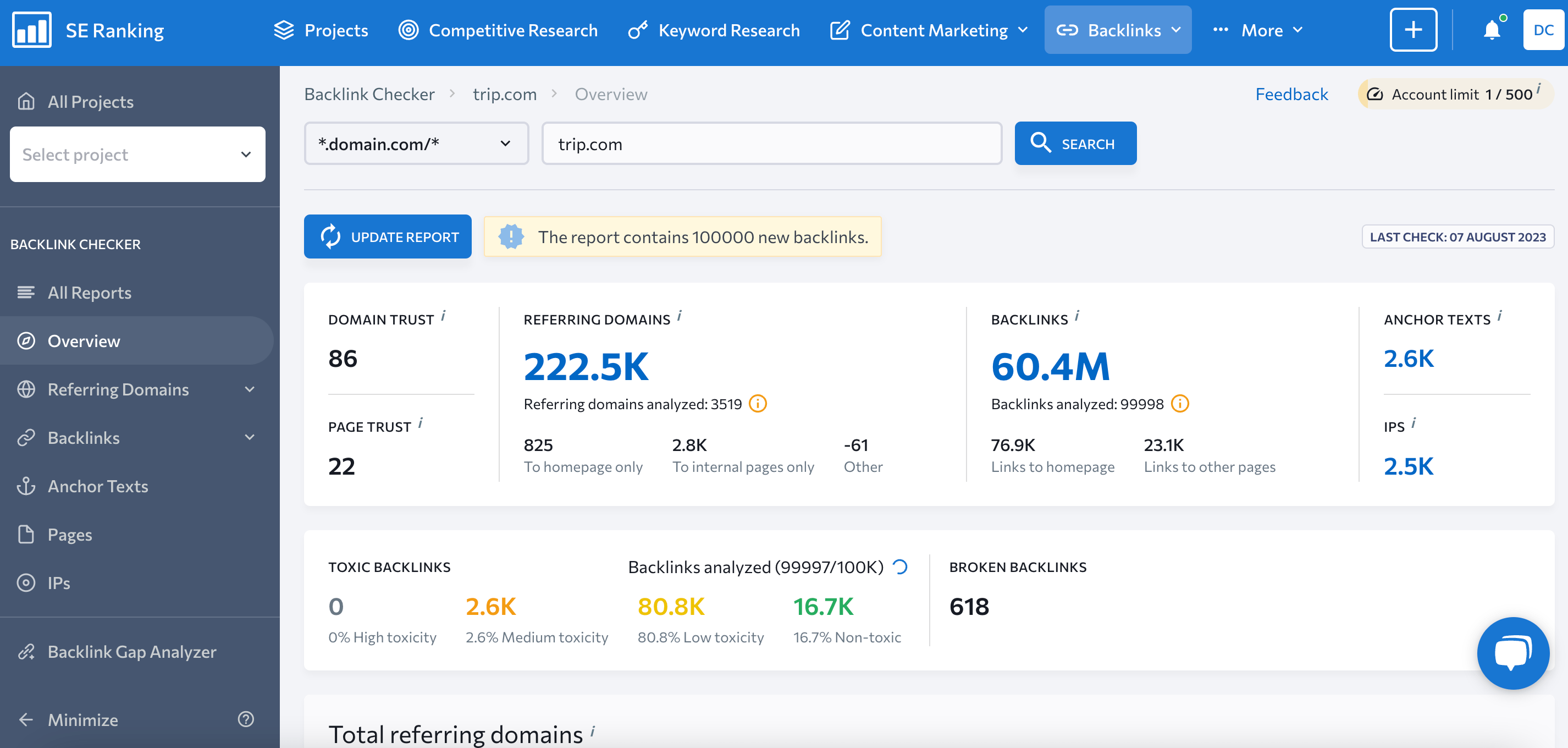
- To access all the existing backlinks of your competitor, navigate to the Backlinks section and scroll down to view the list of URLs.
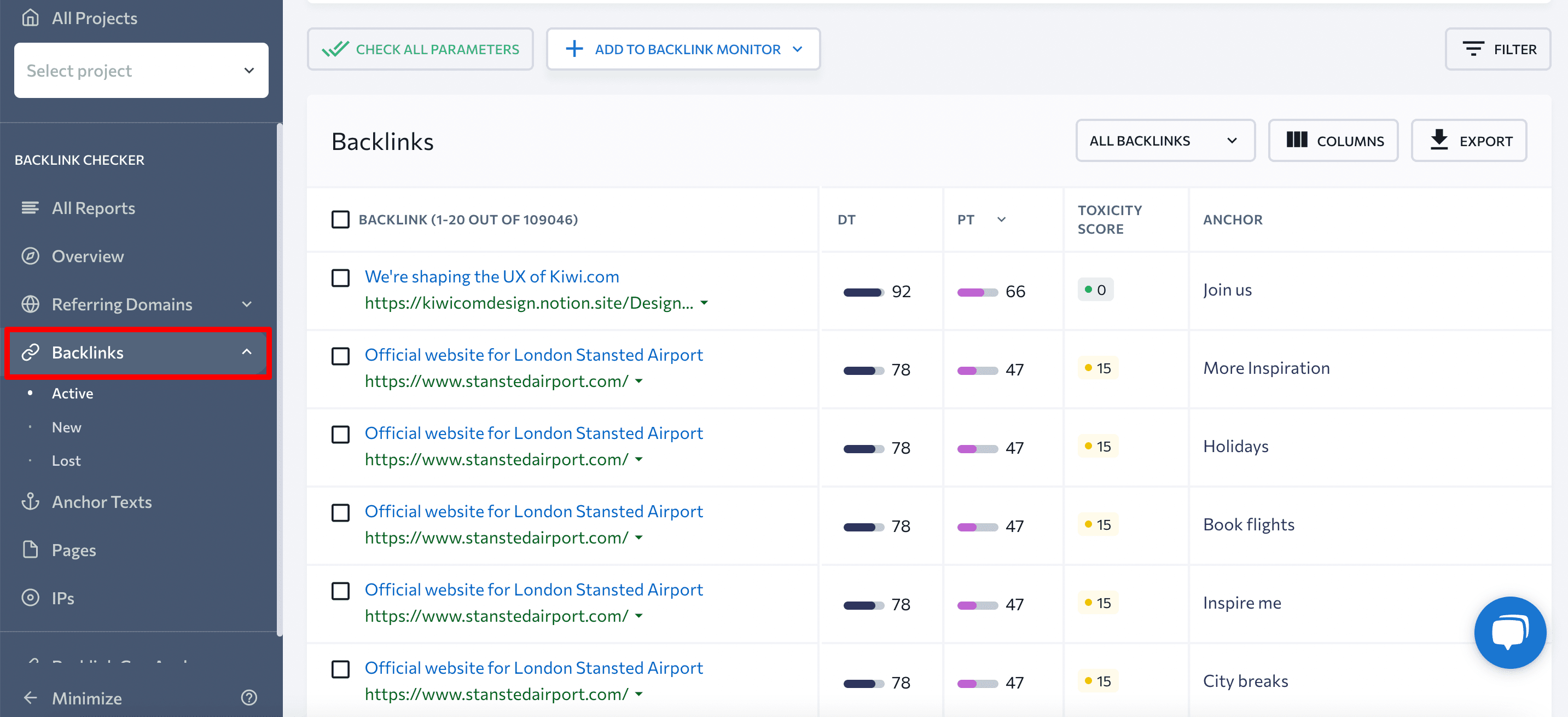
This list not only shares the URLs of referring pages but also essential metrics like Domain & Page Trust score, Toxicity score, estimated traffic, anchor text, target URL, link type, and more. A deep dive into these parameters reveals the quality and relevance of each backlink, assisting you in identifying the most promising prospects for your link-building strategy.
By default, the tool displays all active backlinks while also providing the option to view new and lost backlinks.
Conveniently enough, you can save the list of backlinks by exporting it.
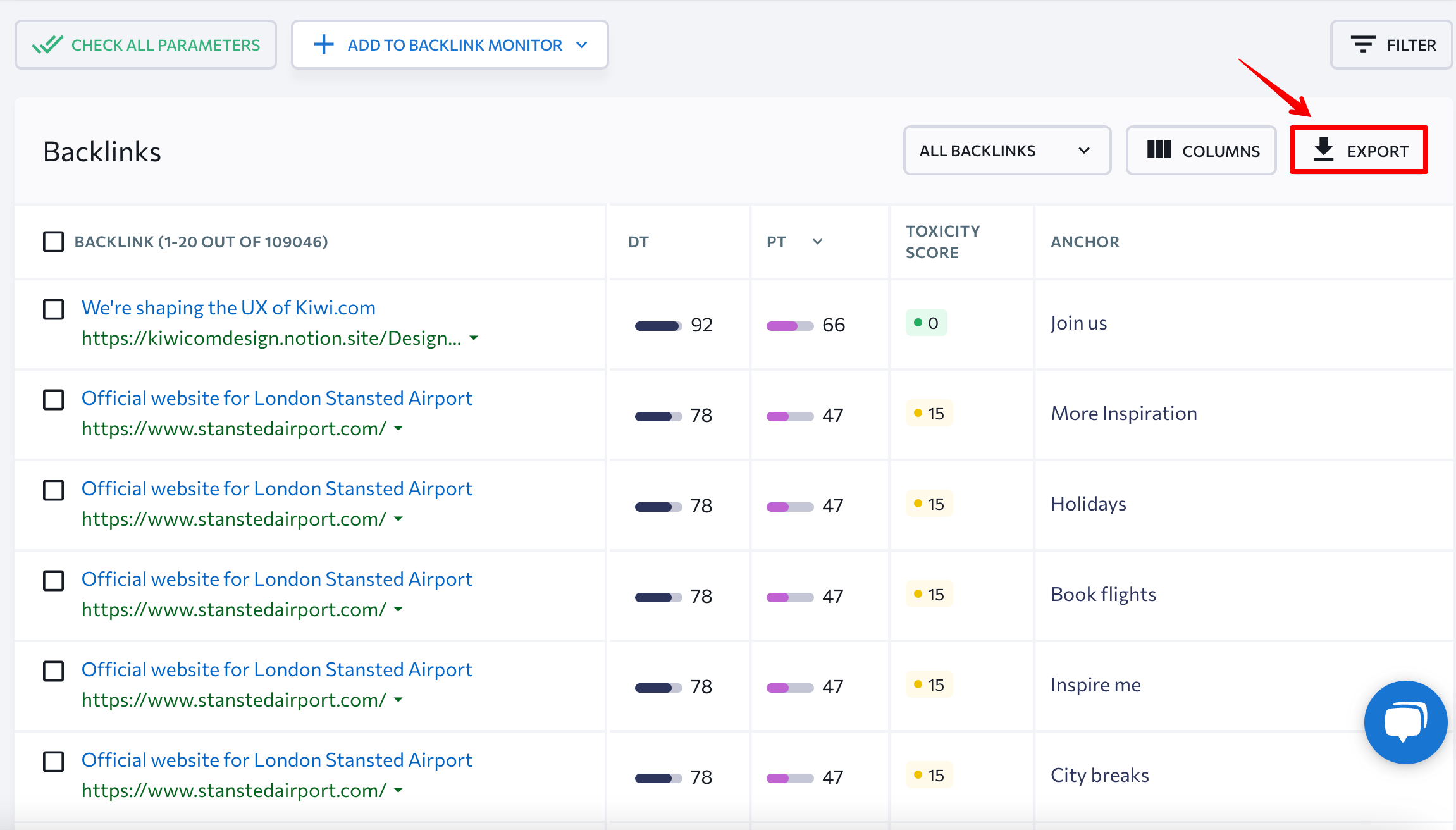
What’s the easiest way to find the backlinks that your competitors have but you don’t?
Unearthing the hidden gems in your competitors’ backlink arsenal doesn’t have to be a daunting task. Here are two methods that can streamline this process:
Use the Backlink Gap Analyzer
With SE Ranking’s Backlink Gap Analyzer, you can easily identify the links your competitors have that you’re missing out on. Here is a quick guide on how to use this tool to find backlinks of competitors:
- Enter your domain for comparison and add your competitors’ URLs. You can include up to 5 rival domains. Now, click the Run Analysis button.
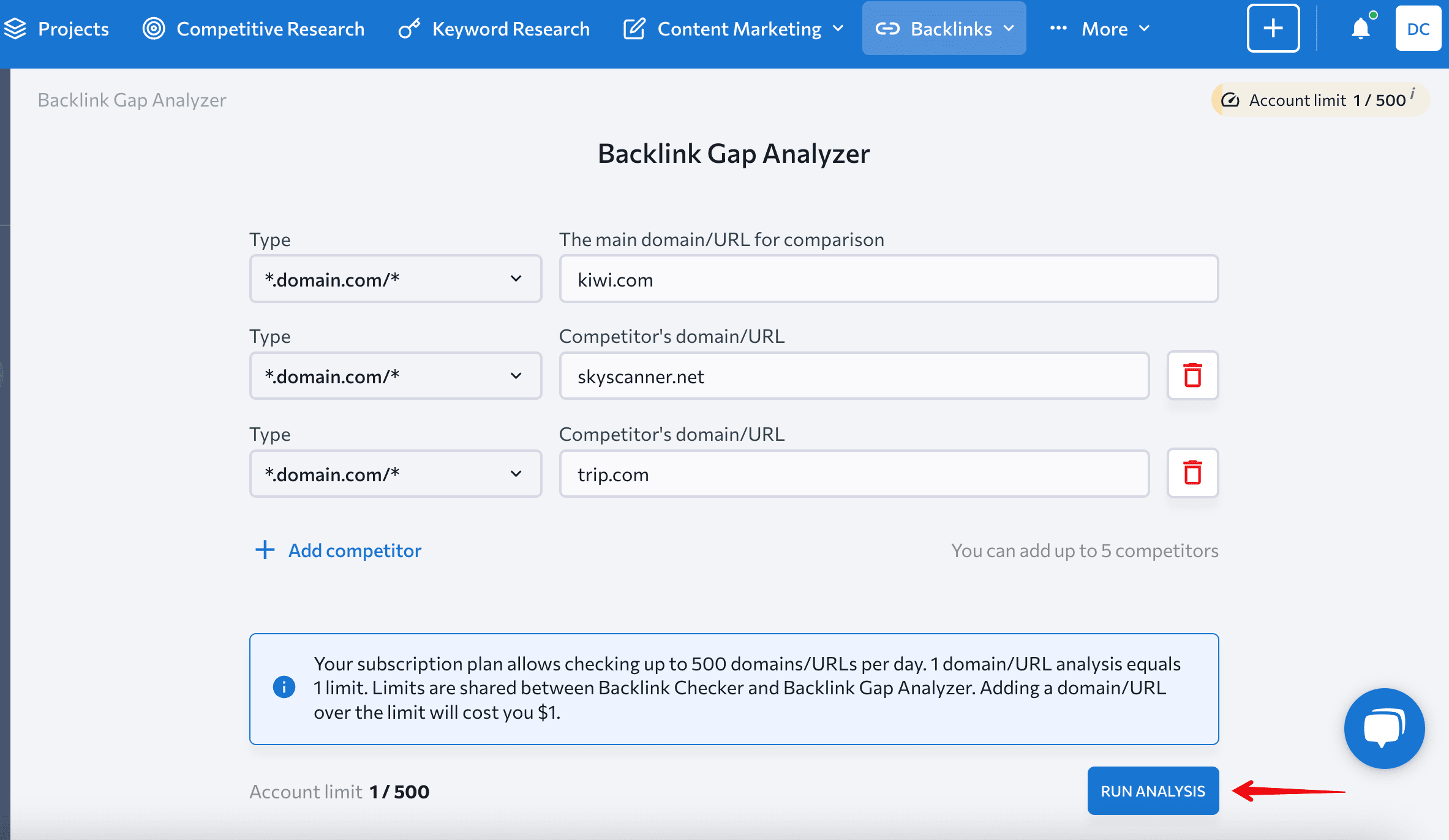
The tool will display all the backlinks your competitors have that you are currently missing.
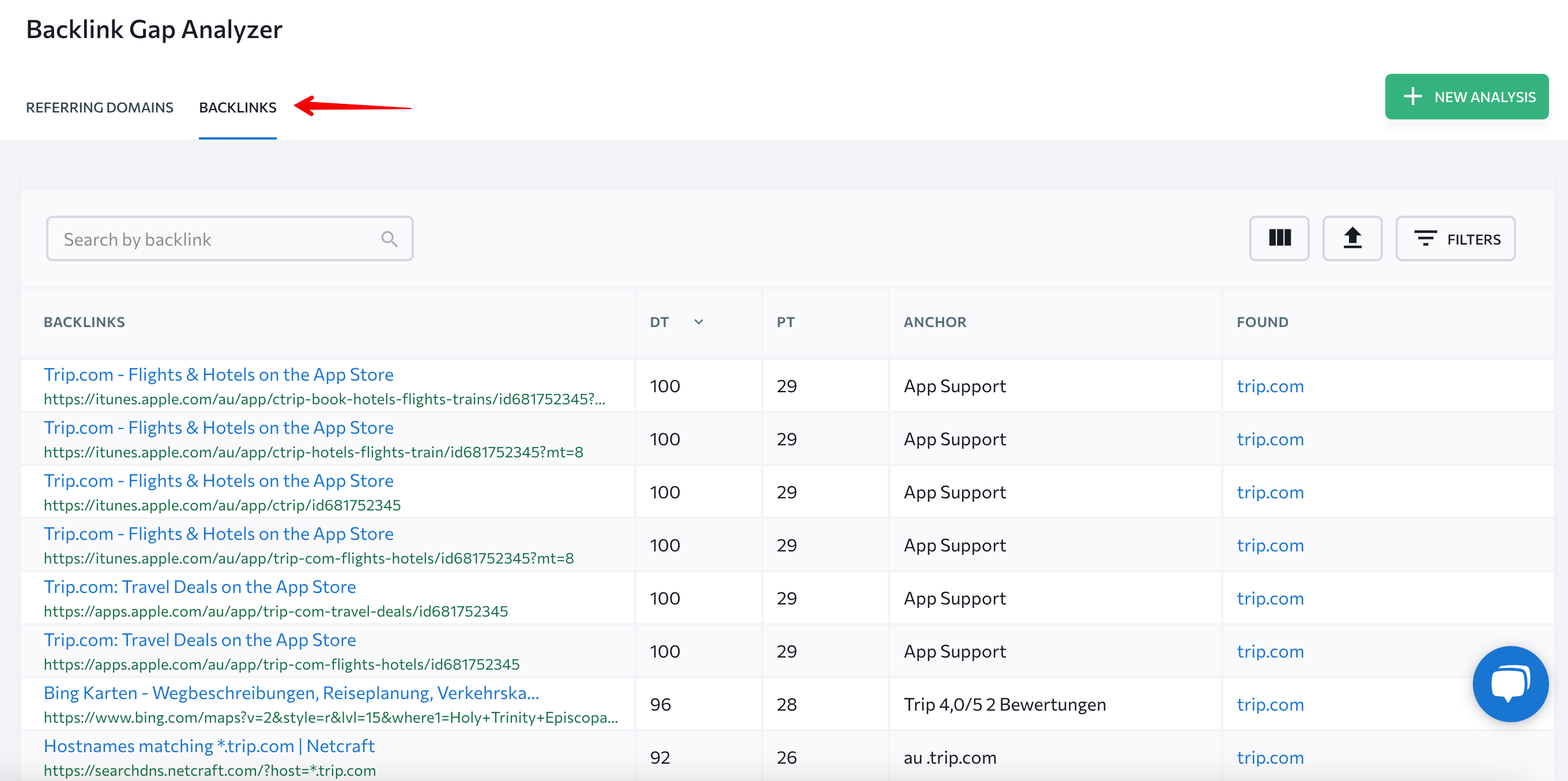
- Examine the list of missing backlinks and identify potential link building opportunities by paying close attention to their parameters. Prioritize backlinks from authoritative and relevant sources that align with your SEO strategy.
- Export your comprehensive backlink analysis report with a single click.
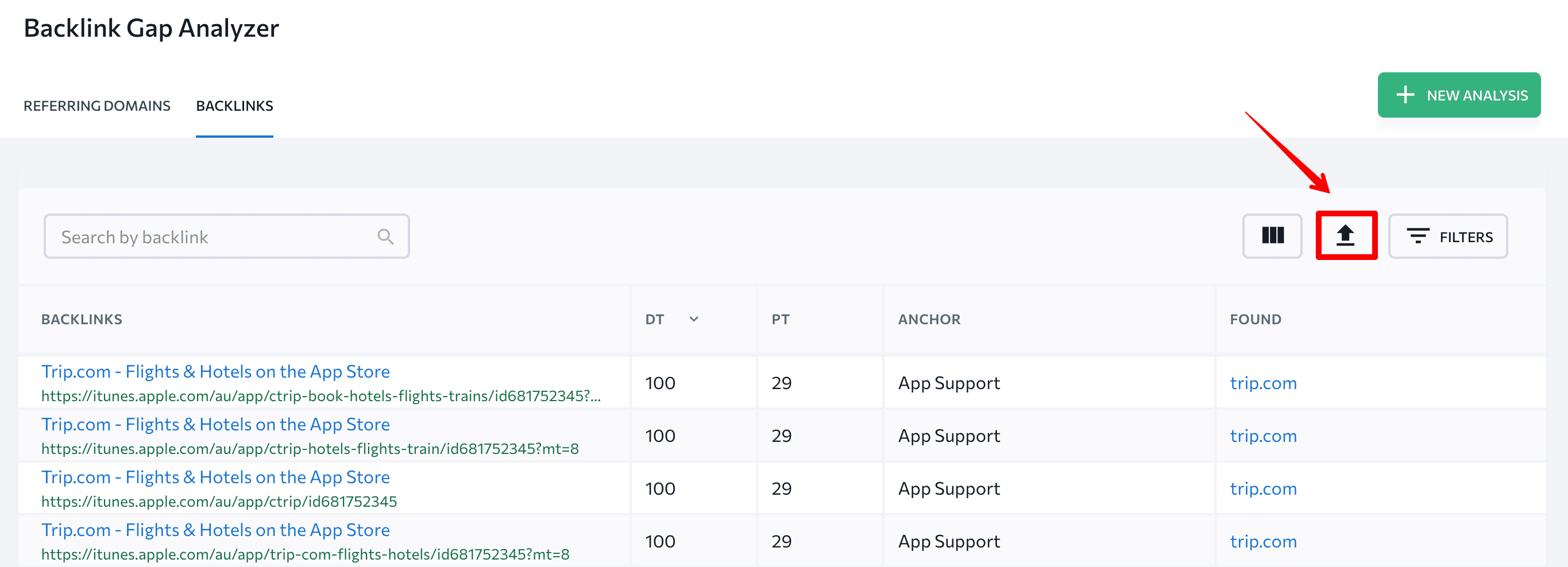
- To access backlinks from each referring domain, navigate to the Referring Domains tab and click on the corresponding page count.
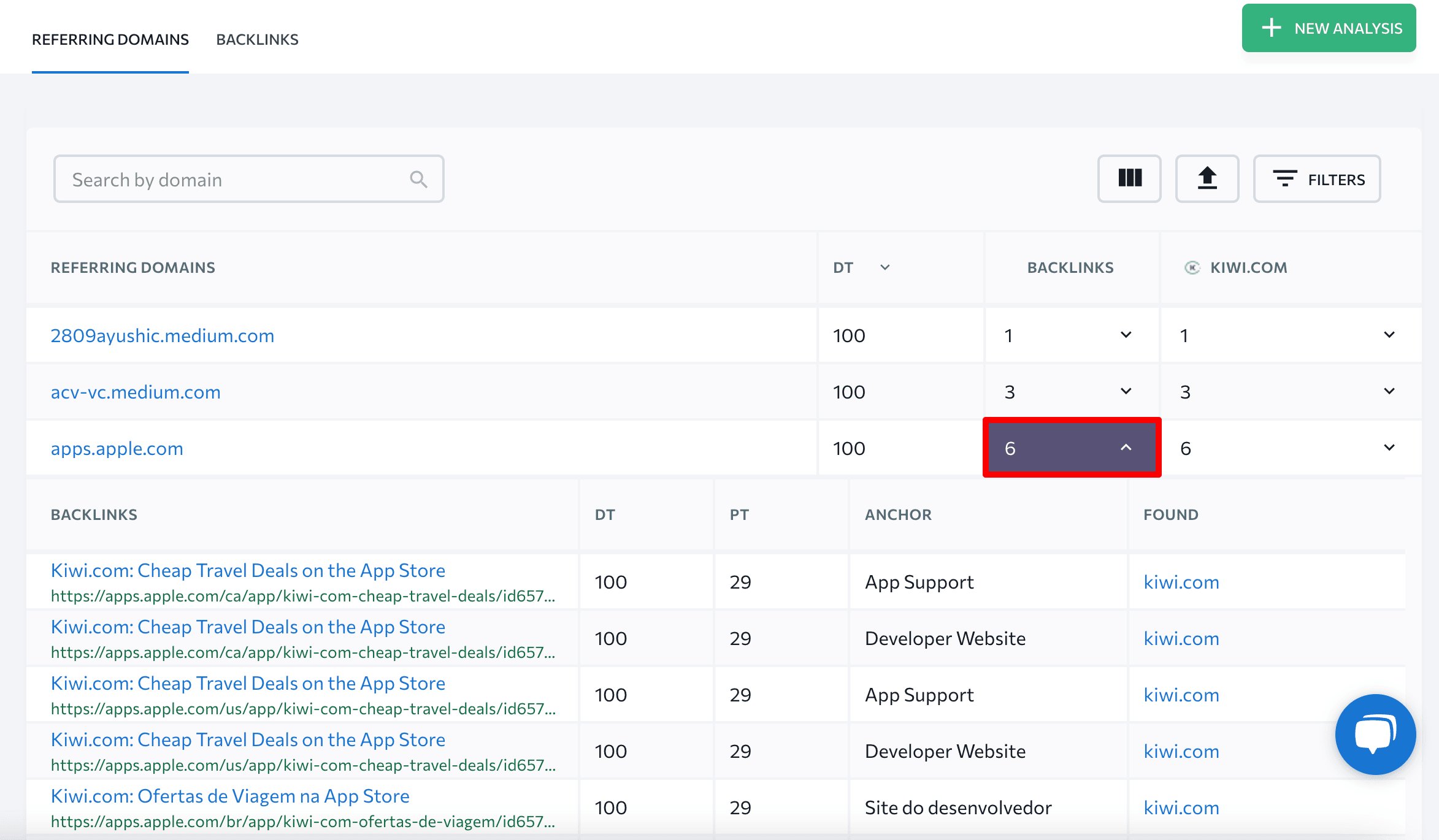
Use Bing Webmaster Tools
Another effective way to find your competitors’ backlinks is through Bing Webmaster Tools. This often-overlooked resource can yield valuable insights into your competitor backlinks.
Let’s take a close look into the step-by-step process of working with Bing:
1️⃣ Start by selecting the Backlinks section and then click on the Backlinks to Any Site tab.
2️⃣ Add your competitors’ websites for comparison.
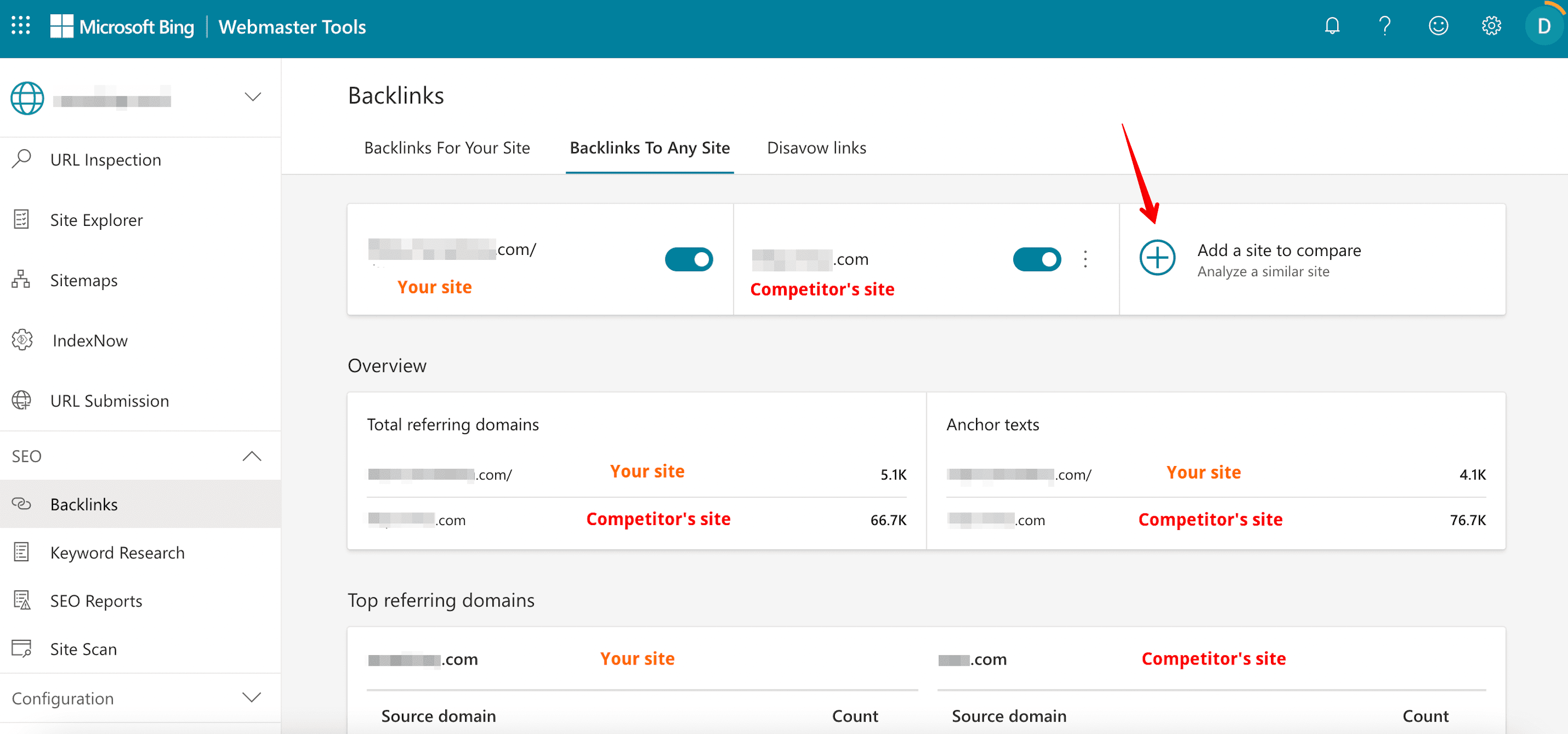
3️⃣ Initially, in the Top referring domains tab, you will encounter domain-level information that offers insights into websites linked to your competitors. Choose the View detailed report option.
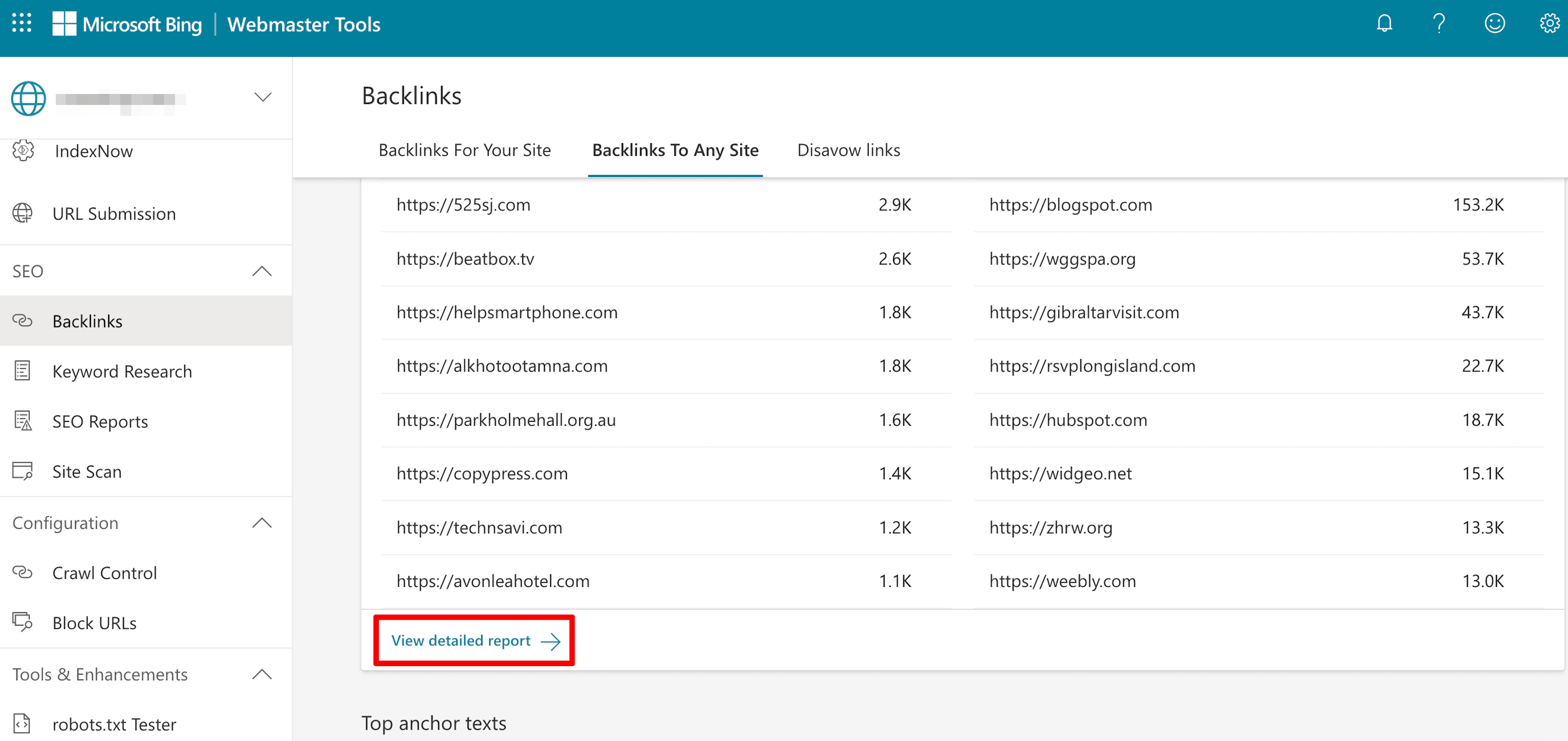
4️⃣ To narrow your focus, apply the filter labeled Show domains not linking to my site. This will display domains exclusively linking to any competitor sites you’ve added.
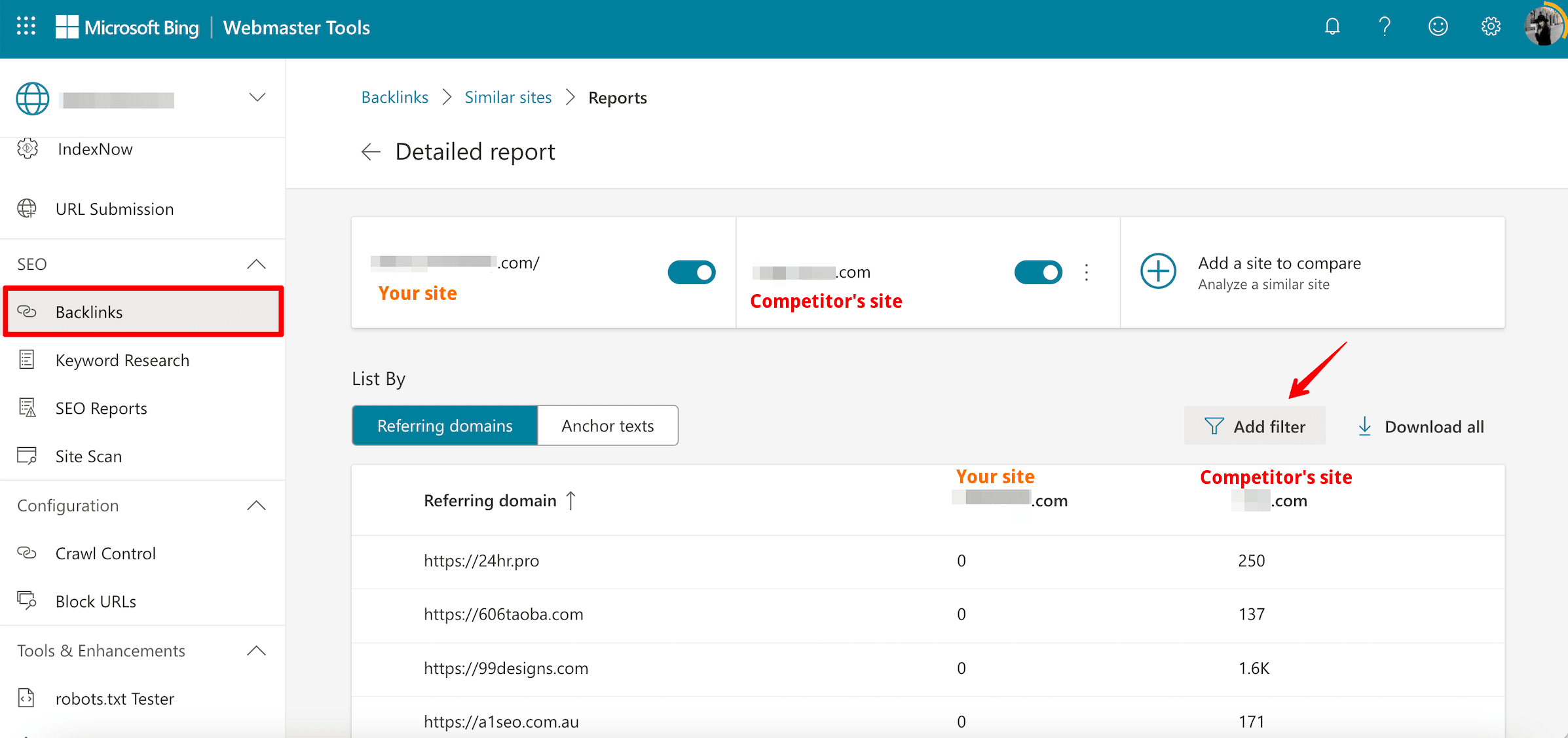
5️⃣ Click on the URL of the referring domain to access the links that your competitor has received (but you have not) from that specific website.
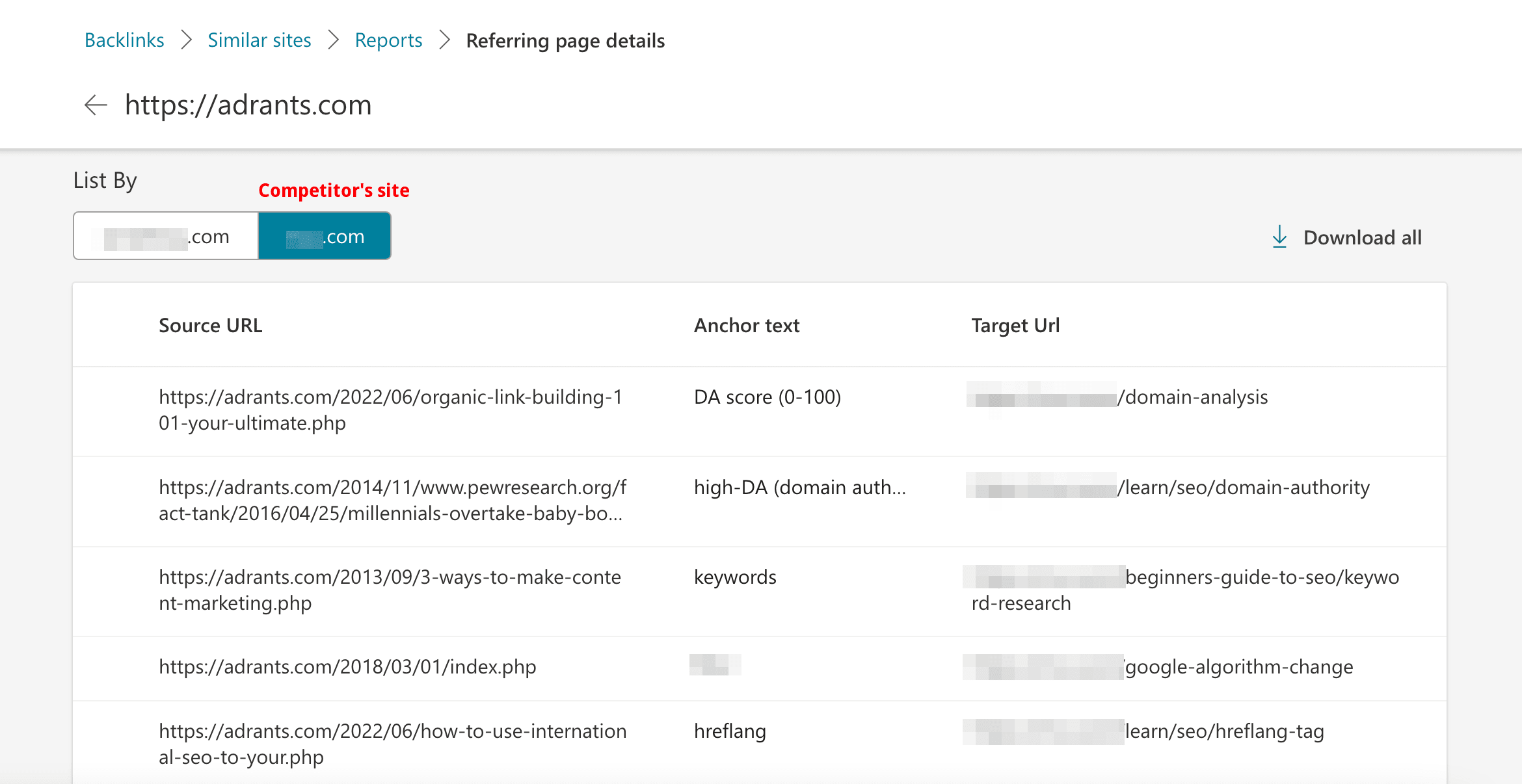
How to know about competitors’ new mentions
Mentions are a goldmine waiting to be tapped. If a website mentions your competitor, it’s highly likely that it’s relevant to your site as well and might include a potential backlink. This opens the door to reaching out for link building prospects. Here’s how to stay in the loop:
Use Google search operators combo
Utilize search operators like “competitor_brand” after:a specific **** to uncover recent mentions of your competitors. Let’s observe this method in action. For instance, we applied this operator to Google:
“apple” after 2023-08-07
The result? Numerous websites featuring mentions of your competitor after August 7, 2023.
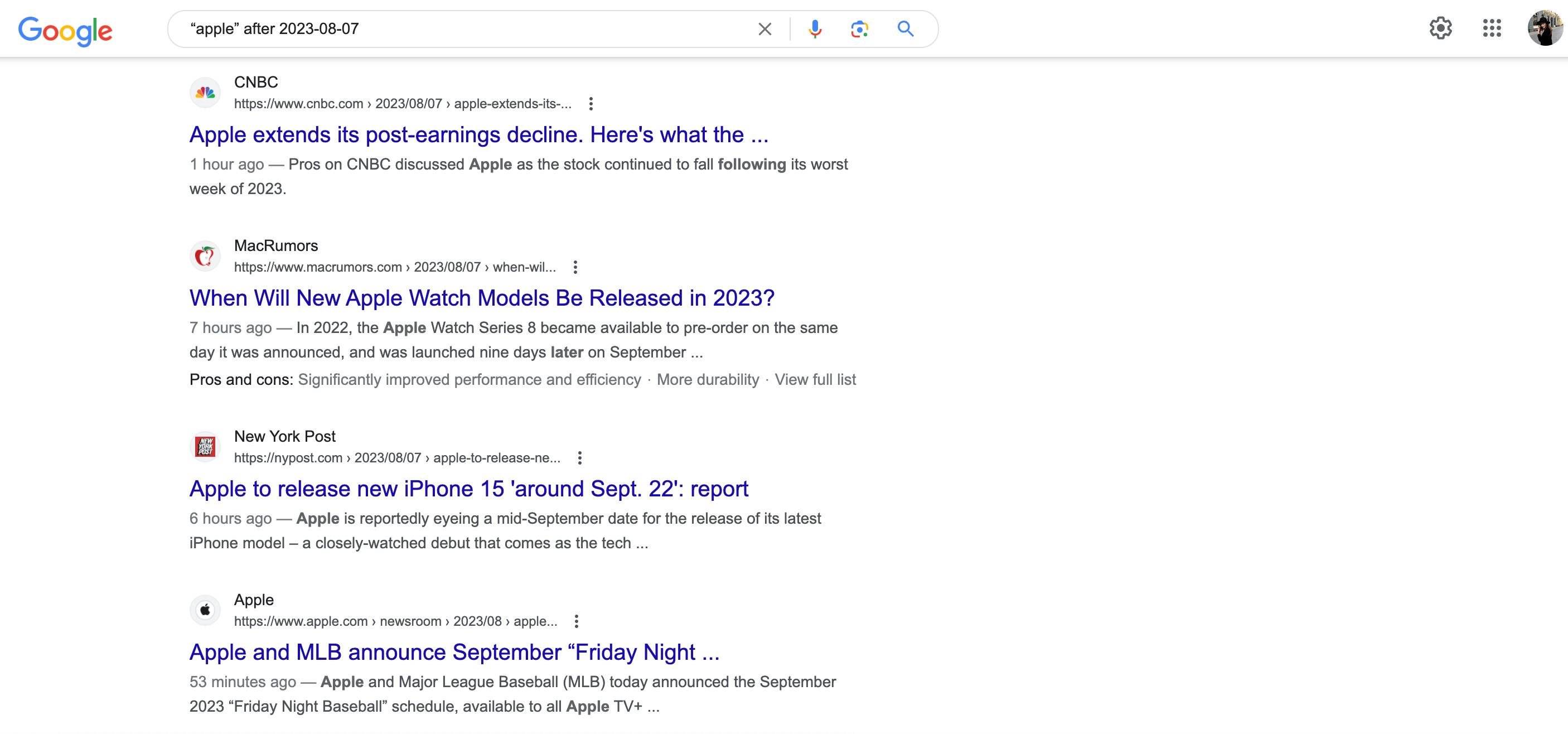
Set up Google Alerts
Configure Google Alerts to receive timely notifications directly to your email whenever your competitors are mentioned online. Think of Google Alerts as your personal assistant, tirelessly scanning the web to keep you informed. You’ll receive emails when new results for your topic appear in Google Search.
All you need to do is enter a keyword you wish to track (in our case, it’s a competitor’s brand name), select how often you would like to receive alerts, fine tune other settings, and hit the Create Alert button.
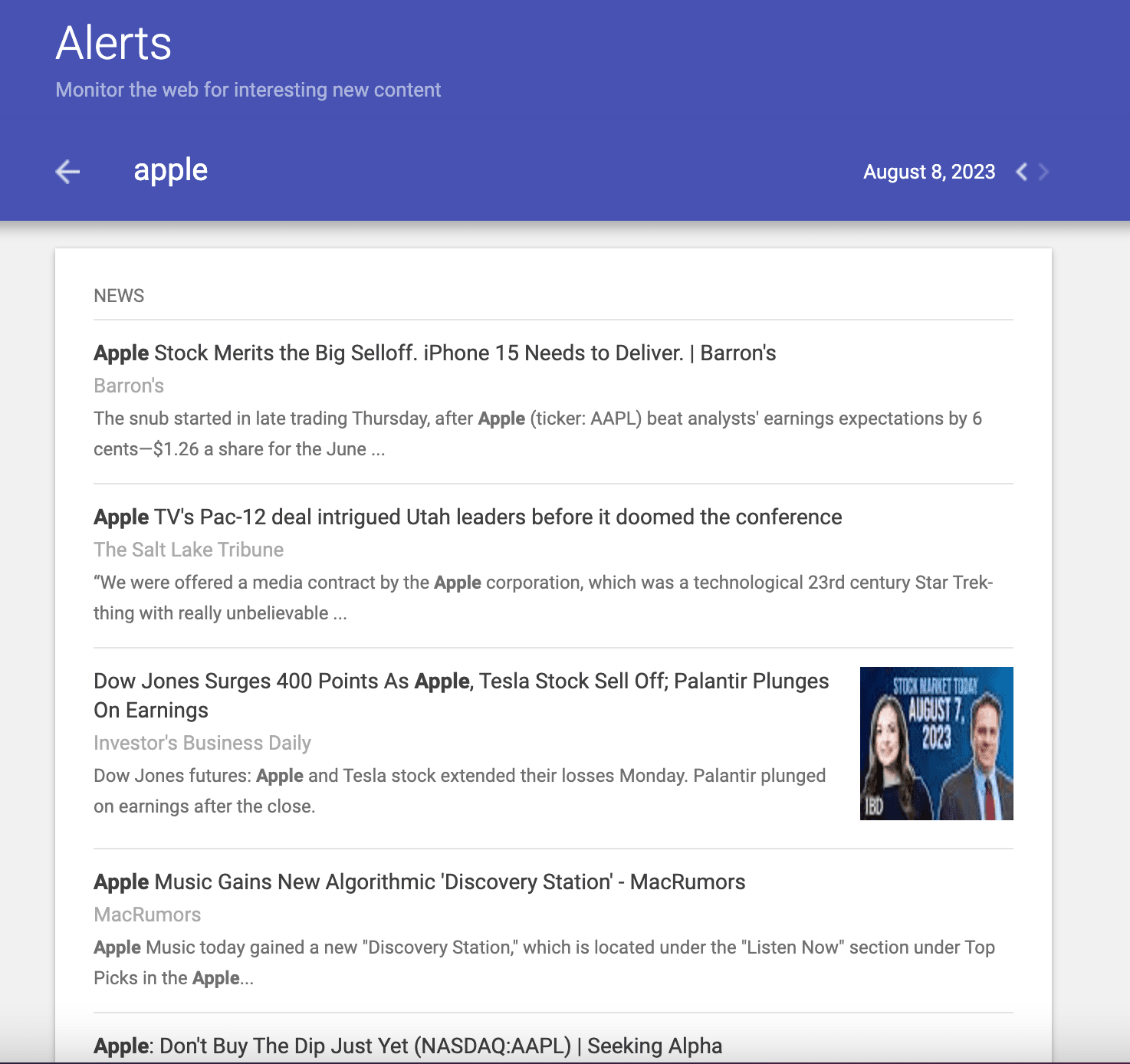
Whenever your competitors are mentioned, you’ll receive a notification in your inbox. This proactive approach ensures you’re always in the know, ready to seize opportunities and transform mentions into valuable backlinks.
Capitalizing these mentions gives you the chance to reach out to either the author of the post or the main contact on the website. You can inquire if they’d be interested in adding a link back to your website along with the mention of your brand. For instance, a post mentioning multiple competitors could be an ideal moment to ask for a link to your website.
Responding swiftly to these mentions can not only help you secure backlinks but also foster relationships within your industry.
Wrapping up
Google consistently compares your site’s optimization efforts to those of your competitors during its ranking process. One of the most critical factors Google focuses on is your backlink profile. If you want to look decent and get ahead of your competitors, you need to keep an eye on their off-page SEO strategies. Employ the techniques we highlighted in this article about finding competitors’ backlinks to enhance your own backlink profile. Explore tools like SE Ranking’s Backlink Checker and Backlink Gap Analyzer, tap into Bing Webmaster Tools, and harness the power of mentions to fuel your own backlink arsenal.
